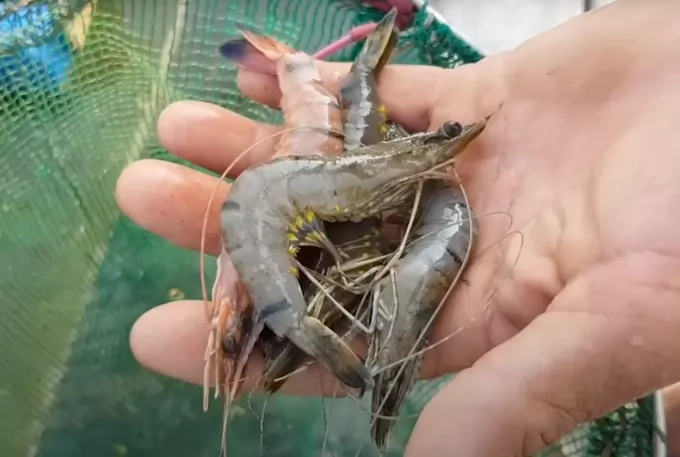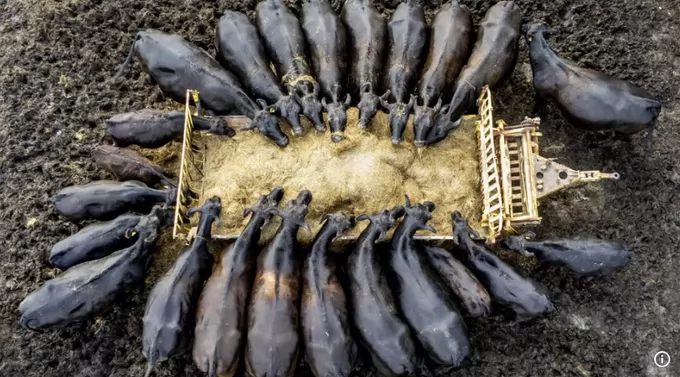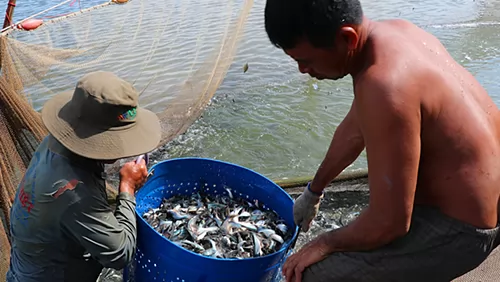Cow breeding yields high income for farmers in Tiền Giang
Tiền Giang Province is encouraging farmers to breed oxen and raise cows to earn higher incomes. — VNA/VNS Photo Vũ Sinh
Viet Nam News / HCM CITY — Farmers who breed oxen and raise cows in the Cửu Long (Mekong) Delta province of Tiền Giang have greatly improved their income.
Nguyễn Thị Hồng Hạnh, who has 3.3ha of farmland in Gò Công Tây District’s Thạnh Trị Commune, cultivates rice and vegetables, and breeds cows on her farm.
She earns a profit of nearly VNĐ500 million (US$22,000) a year from her mixed farming model, she said. Of the profit, VNĐ100 million is from the sale of calves from breeding cows.
Farmers breed cows and raise oxen under a model in which they plant crops and breed fish and animals.
The garden–pond–animal pen model or other mixed production models are considered useful for farmers who lack sufficient land and for those affected by climate change.
Bùi Văn Hòn, who was the first farmer to breed cows and oxen in Gò Công Đông District’s Tân Đông Commune, is breeding five cows and raising eight oxen for sales of meat.
Hòn has only 1ha of rice which does not yield enough profit for his 10-member family. But now he earns a good living from raising cows and oxen.
Farmers in Tân Đông Commune, which is affected by saltwater intrusion, have adopted Hòn’s model.
Gò Công Đông has 6,315 oxen and cows, according to the district’s Agriculture and Rural Development Bureau.
The cow and oxen model has reduced poverty in the province’s coastal areas, islets and outlying areas, according to local authorities.
In recent years, authorities encouraged farmers to switch from ineffective rice fields to the garden – pond – animal pen model.
In 2012, Nguyễn Văn Trọng, who lives in the outlying Mỹ Phong district in Mỹ Tho City, shifted his 9,000 sq.m of a rice field to the garden - pond – animal pen model.
Trọng plants Xiêm coconut, green-skin and pink-flesh grapefruit, as well as grasses for breeding oxen and raising giant gourami.
With the model, he earns a profit of VNĐ300 million ($13,200) a year, far more than what he earned from rice.
He regularly attends training courses on farming and animal breeding techniques.
Trọng also donates dozen of million of đồng a year to help the poor, and has helped build transport and irrigation infrastructure in his commune.
He has been honoured by city authorities as an excellent farmer in Mỹ Tho City for his results in production and trading of agricultural products.
Nguyễn Hoàng Đảm, deputy chairman of the Mỹ Tho City People’s Committee, said Trọng’s garden – pond – animal pen model was suited for the city’s outlying areas.
The province, which is the delta’s largest cattle producer, targets increasing its oxen and cows to 121,000 heads by the end of this year, from 116,000 heads, according to the province’s Department of Agriculture and Rural Development. — VNS
Maybe you are interested

Beware of white spot syndrome in shrimp when La Nina returns
La Nina is likely to reappear later this year, which is causing concern among shrimp farmers because of potential white spot syndrome outbreaks.

Sweden and Finland want to tie EU farm subsidies to rule of law
The call comes after Brussels blocked billions in funds to Poland and Hungary due to concerns over judicial reforms and democratic backsliding.

Vietnamese farmers are not clueless, but their game is rigged
Farmers are at the receiving end of asymmetric information in an imperfect market, and this needs to change.






